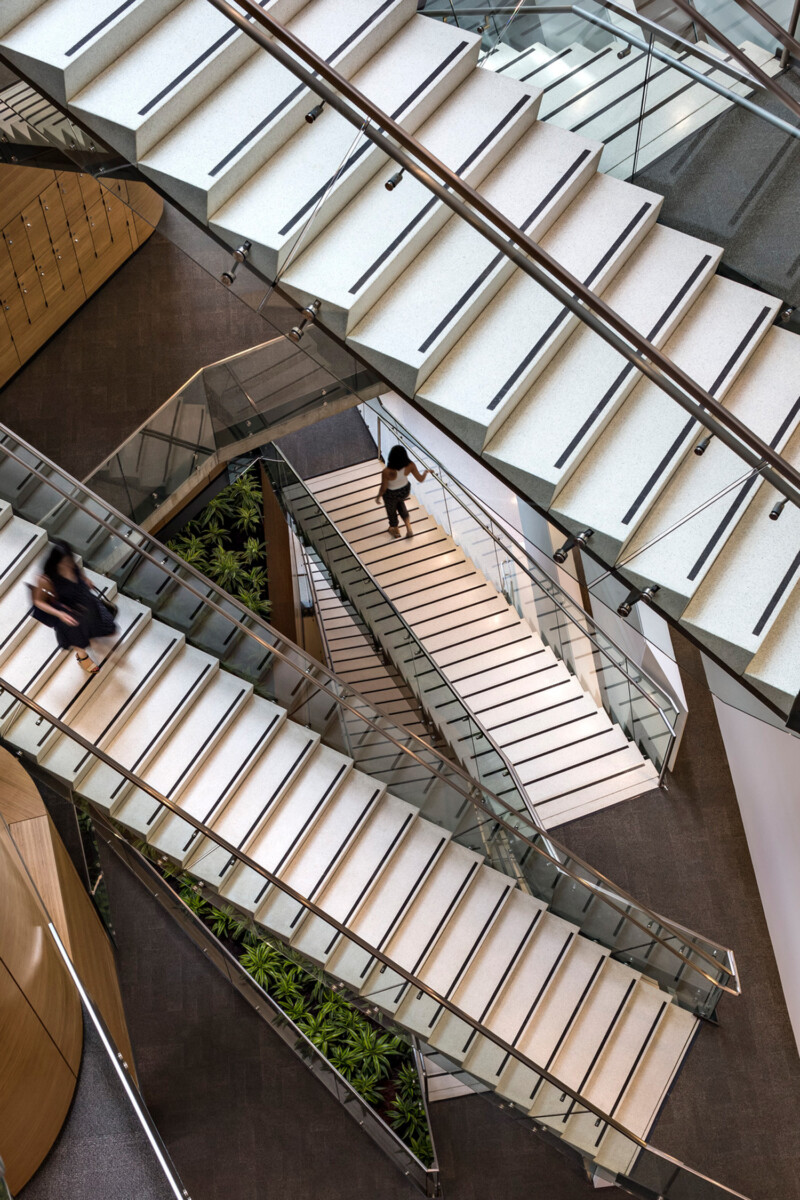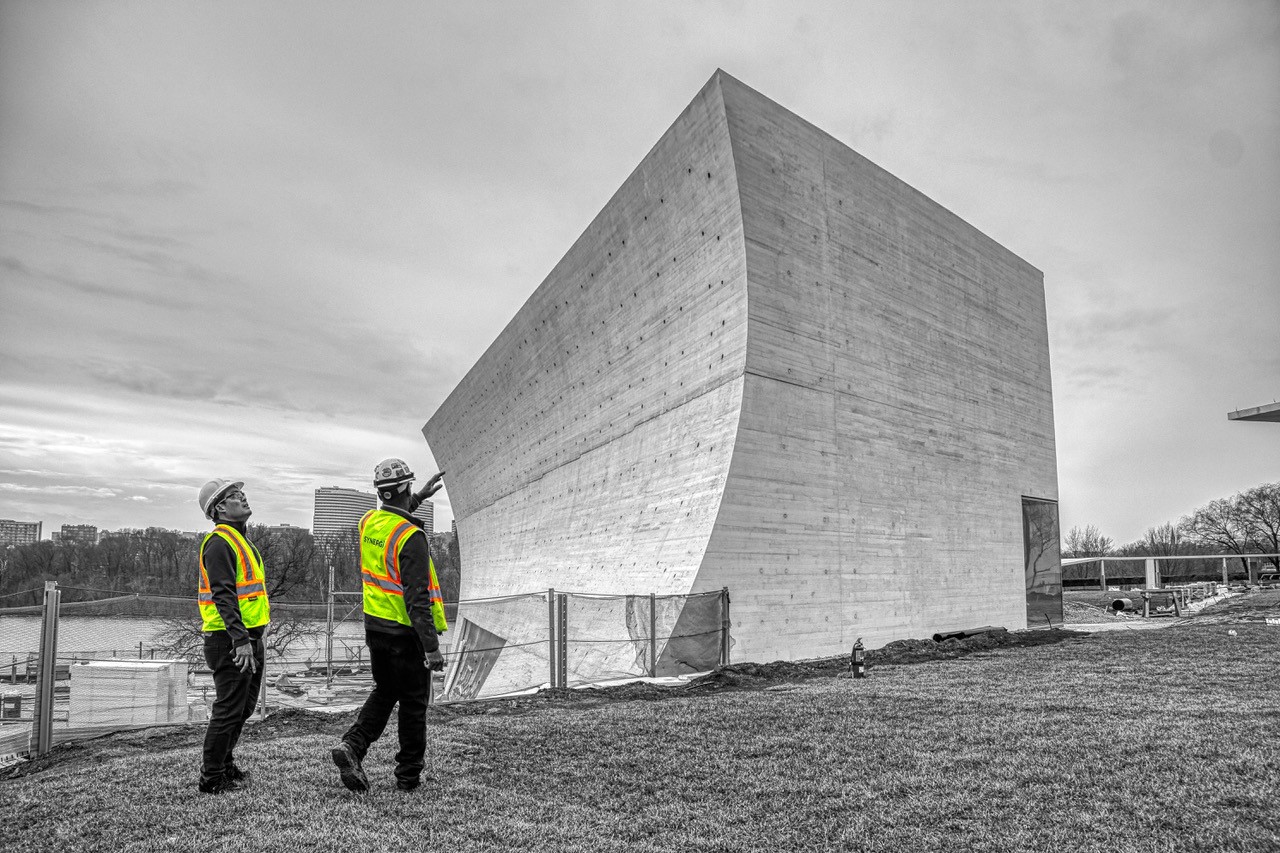Universal Design Series
Increasing Stair Safety With Contrast Stripes
While we applaud all efforts to make stairs more walkable, many existing contrast stripes on stairs today may unintentionally pose a threat to people with low vision (PLV).

Ideally, taking the stairs should be a safe and comfortable experience for any user. However, when it’s challenging to detect the edge of each stair, this can lead to uncertainty and confusion when navigating a stairway.
Many stair designs include contrast stripes on the treads, aiming to create easier detection of each stair edge. While we applaud all efforts to make stairs more walkable, many existing contrast stripes on stairs today may in fact be a safety hazard to people with low vision (PLV).
The first component a person will encounter when approaching a stairway is the stair tread.
“The tread edge or nosing makes up a stair’s edge and is a key attribute in stairway design that allows users to understand the elevation changes between steps, placement of the leading foot, and to establish and control gait while navigating the stair.” – Universal Design Guidelines for Feature Stairs | Synergi
For PLV, locating the first and last stairs are often the most challenging part of navigating a stairway. Unless each stair’s edge is clearly marked or each step casts sufficient shadows on the risers, PLV may require a cane or use their feet to feel for the edge of a stair. By knowing where the first stair is, PLV build a mental model about the stair dimensions and extrapolate this knowledge to the rest of the stairs. Thus, the detection of stair edges is especially important to their safely and confidently navigating stairs.
By using a visual indicator like contrast stripes, stair users can easily detect the exact position of surface level changes even from a distance!
FACILITATE THE DETECTION OF STAIR EDGES
Contrast Stripes
Contrasting materials on the step edge/nosing and handrail can provide a very effective visual safety trigger. Contrast stripes on the nosing of a staircase help outline each stair, which is especially helpful when descending stairs. High contrast edges can provide a very effective visual safety trigger – not only do they provide better cues in both the central and peripheral zones of vision, but they also prevent steps from appearing to blend together to create a dangerous illusion of a ramp.
EMPHASIZE THE STAIR EDGE WITH COLOR BY USING:
Stripe Contrast
Contrast stripes or “nosings” should have high color and luminance contrast. Nosing stripes should provide at least 30% luminance contrast to the tread.
Single Stripe Color
Where colored nosings are used to indicate a stair edge, nosings should be a single color. Two parallel stripes of different colors can give a false impression of the location of the step edge, and these nosings should be avoided.
Color Contrast
The contrast of a stair’s edge or nosing is vital for its detection and usefulness. Contrast is about lightness or darkness, not color. Colors that look different may, in fact, have little contrast. A black and white image can provide a useful indication of the visual contrast.
WHERE TO PLACE CONTRAST STRIPES ON STAIRS
Stripe Placement
Stripes should be placed directly on the edge of the stair and should extend the full width of the step. Stripes places away from the edge mislead those who rely upon their use.
These stairs edges at our APTA project are easier to detect due to the use of single contrast stripes:
Different Landings
Some stairs have an extra contrast stripe on the landing. Some PLV rely on monocular cues, such as color changes, to deduce depth changes. By using contrast stripes to mark each step, such stair users come to associate each stripe with a step when navigating stairs, including this extra step.
By incorporating visual indicators like contrast stripes to protect stair users’ safety and confidence, we’re practicing universal design, which further contributes to creating built environments where the most people possible can participate and experience a sense of belonging. It is our hope at Synergi that – with education and awareness – architects, designers, building owners, and developers will take an interest in creating stairways that people are encouraged to use.
Stay tuned for the next part of this series, further exploring the ins and outs of Universal Design.

Synergi Site Superintendent James Waterman Speaks to His Experience in the Industry

